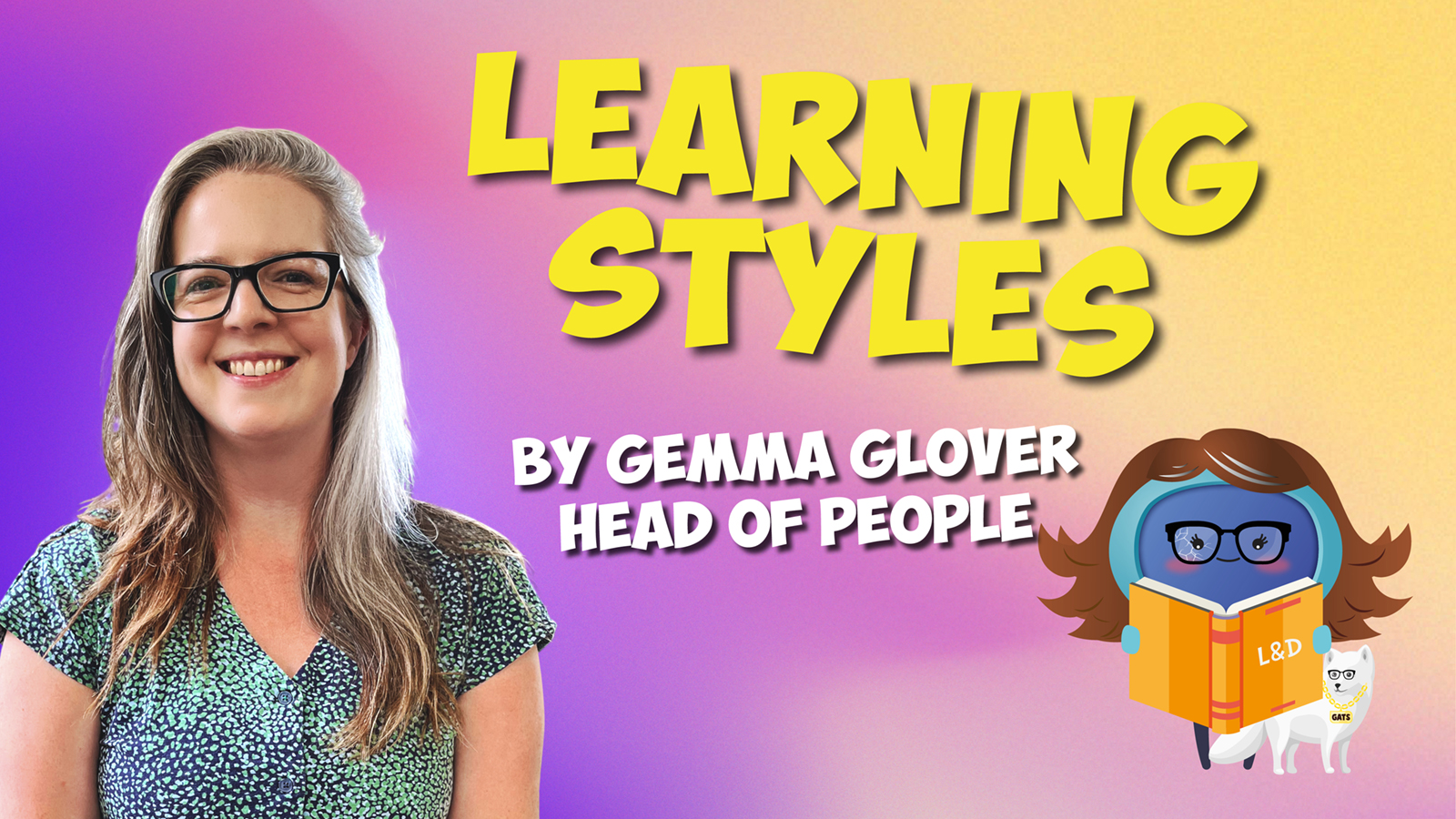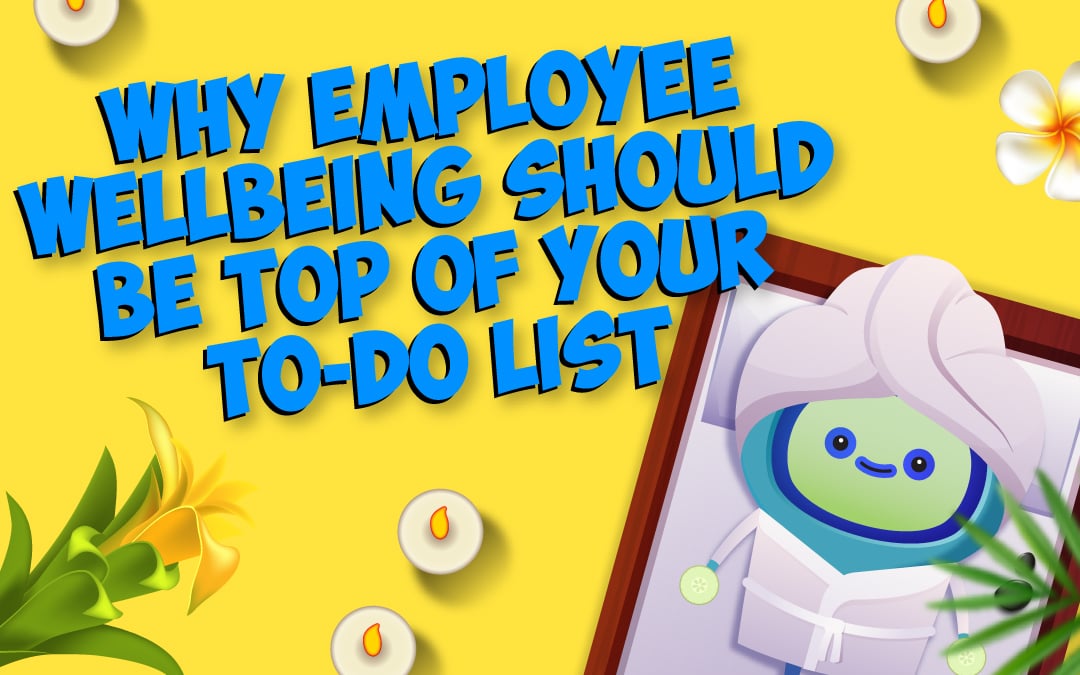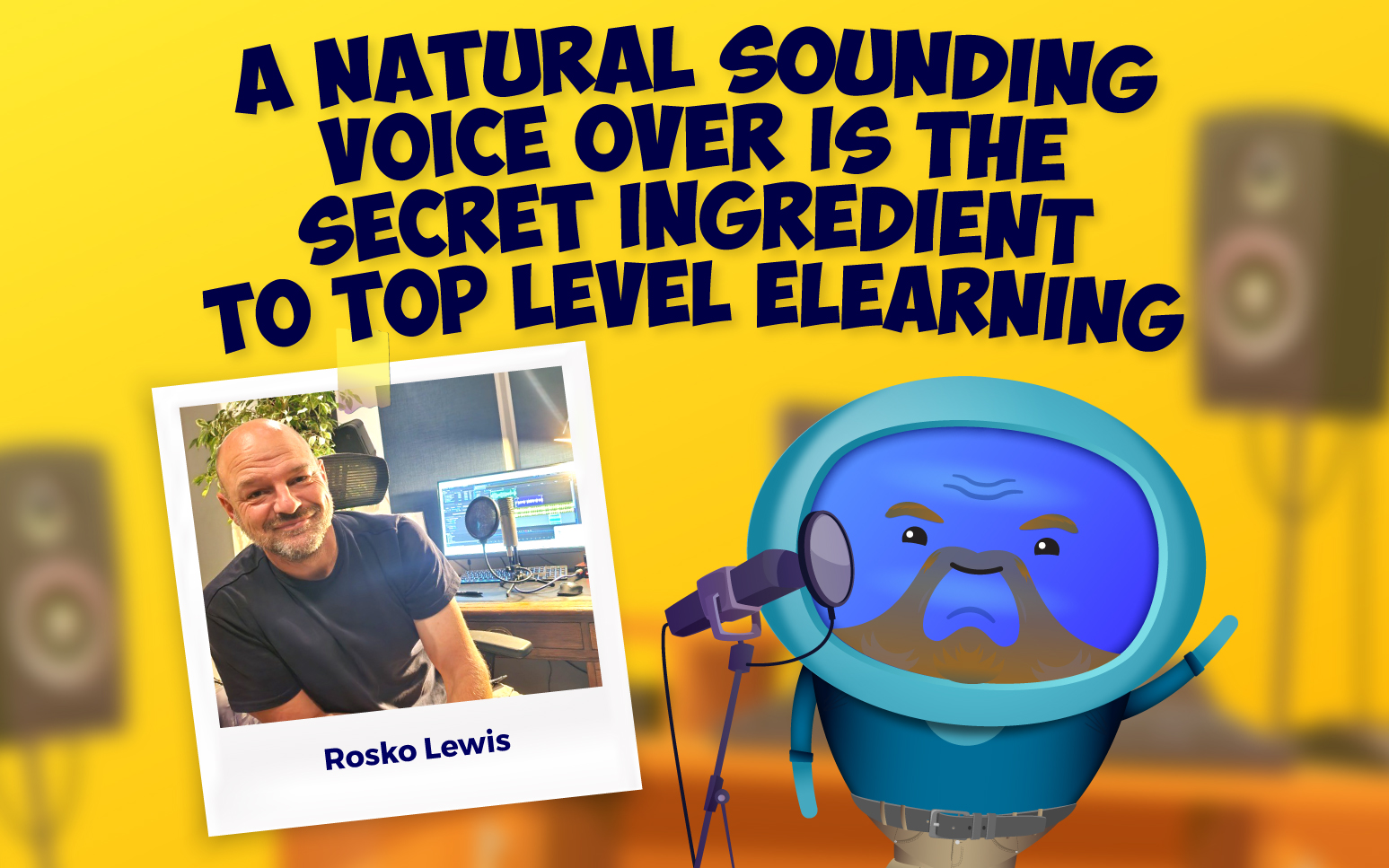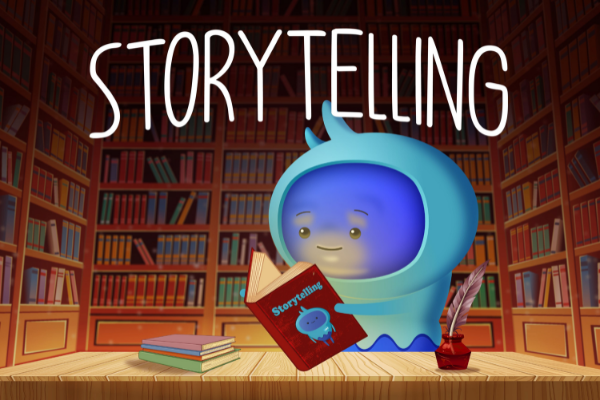.jpg?width=1600&height=900&name=_Blog%20Gemma%20-%20Learning%20Styles%201600x900%20(1).jpg)
1. What they are
Honestly, pre-August this year, I only knew that learning styles did not have a good rep in my team. The mere suggestion that learning styles be considered in learning design resulted in aghast faces and the threat of eviction. To put it lightly, it was a sore point.
And yet, I still saw them referenced on LinkedIn and during various webinars. How could they have significant weight in some places, and be utterly ridiculed in others? I knew I wanted to pick an informed side of the fence, which needed to start with the concept itself.
So, what exactly are they? Looks like they generally capture a range of different models, gaining popularity in the 1970’s, which attempt to put the way we individually learn most effectively into a specific category. You’ve got the one most people seem to refer to – VAK (visual, auditory and kinesthetic), then Kolb’s (accommodating, converging, diverging and assimilating), and Honey and Mumford’s (activist, pragmatist, reflector and theorist), amongst others.
2. A distinct lack of evidence
I really can’t find anything to back them up. They’re like an evasive myth haunting L&D. I did find some nice quotes though:
‘When training programs spend time discussing learning styles, that’s time not spent discussing proven practices to enhance student learning.’ William Furey
‘…Essentially, all the “learning style” meant, in this case, was that the subjects liked words or pictures better, not that words or pictures worked better for their memories.’ Olga Khazan
‘It’s not like anything terrible is going to happen to you [if you do buy into learning styles], but there’s not any benefit to it, either. Everyone is able to think in words; everyone is able to think in mental images. It’s much better to think of everyone having a toolbox of ways to think, and think to yourself, which tool is best?’ Daniel Willingham
3. Apparently, I have a visual learning style
In a matter of minutes, you can put yourself into a neat little VAK box, here. No doubt, other speedy tools are available.
Reading through my diagnosed preferences and strengths, such as being an excellent organiser, easily visualising objects and instinctively follows directions, puts me in mind of reading my horoscope for the week. Incidentally, it’s time for me to assert my independence and embrace joyful energy.
The self-assessment angle is an early red flag. I can’t really be sure, when I’m completing statements such as, ‘I remember things best by…’, that I’m not just thinking of the RSI and thousands of hand-written multi-coloured cue cards during my A-levels, when I select, ‘writing notes.’
4. I’m also Ken (and other helpful revelations)
A few years back, someone on the radio said, ‘If I say, ‘cat’, what happens for you?’ I went straight to the sound of its purr and the feel of its fur, which rather brilliantly, are the other two of (unpreferred by me) VAK styles – auditory and kinesthetic. I asked my partner the same thing and he described what a cat looks like.
Whilst these can be thought of more as ‘associations’ than learning, they do perhaps illuminate the differences in our brains.
But then, just as with this exciting Barbie character quiz, where on this particular day, in this particular moment, I’m Ken (passionate, motivated and just a little bit goofy), does the result of the cat prompt depend on a whole host of things? Like, what happened during our last interaction with a cat, how exactly I phrased the question to my partner, whether as we answer, we’re touching something soft?
5. Beware, the cage of self-limiting beliefs
How do you build flat-pack furniture from IKEA?
Is it the same approach you’d take for cooking something new?
And is that how you prepared for your driving theory test?
Maybe they’re all the same. Maybe in every circumstance you can think of, and consistently throughout your life, you’ve rolled up your sleeves and got stuck in, confident you’ll figure it out as you go. Or you’ve read instructions and manuals until your eyes break.
Whilst I don’t doubt that the self-aware have a pretty good idea of what will and won’t work for them, when learning styles are out and about in real life, they typically take the form of, ‘the only way I learn is x.’
This is the familiar story we tell ourselves. It’s what we know and where we’re comfortable. It stems from perceived evidence and just feels right. So, often, when we’re asked to learn something differently or to try a new way, we self-sabotage in a lovely act of confirmation bias. Voila – told you so, this isn’t the way I learn.
And it might just be true. But if we never turn that belief over and interrogate it, if we close ourselves off to experimenting and retreat into our self-made pigeonholes, we’re likely doing ourselves a disservice.
The best learning providers and instructors have intelligently considered the packaging. Their goal is learning transfer, so alongside understanding you, the learner, your needs and preferences, your experience and barriers, they’re also looking at the most efficient and effective way to deliver the information so it sticks, so it enables or changes something.
You might be right, and they might be wrong, but if self-worth is born from the things we manage to do, which we’ve spent ages telling ourselves we’re not capable of doing, there might just be some value in staying open.
6. You’re probably better off just paying attention to yourself
As convenient and timesaving as learning styles can appear, there are other, actually scientifically-backed approaches, to predicting what’s going to help you learn.
Things like reflection. Better yet – trying out different ways to reflect. At the risk of making you feel like you’re looking into a kaleidoscope, there are so many techniques, tools, theories, models and apps out there that profess to elevate learning. And the only way you’ll find out if they help you specifically, is to give them a whirl and report back.
This might take the form of talking a friend through your takeaways, writing down your thoughts, and asking yourself things like, ‘What resonated? What made sense and why?’ Conversely, ‘What didn’t land, and how did that make me feel? Did I give it a go anyway?’ Or just sitting with the experience for a while and reviewing it later.
You won’t be surprised if you don’t open yourself up to surprises.
‘Growth is uncomfortable. If you’re not uncomfortable, you’re not growing.’ - anon
7. I know how I like my steak cooked
But that’s only because I’ve tried it every which way at some point. So now, when I’m asked, ‘how would you like it?’ I confidently reply, ‘medium rare.’
Caveat – except for when they say something like, ‘The chef recommends…’ Then I happily lay down my preferences, my acquired evidence, quiet the voice shouting, ‘but you always have it medium-rare – it’s what you like!’ and go with the chef.
In other words, upon discovering yourself – what works and what doesn’t, realising you like listening to the podcast over reading the transcript, or watching a real person perform an excellent cartwheel over a tutorial video, don’t let that become an easy default. Stay curious. Stay receptive.
And be careful you’re not ordering for someone else on their behalf too, based just on what’s gone before. People change and are capable of more than we give them credit for.
8. Is any of it true?
Variety and providing a range of ways for people to engage and connect isn’t a bad thing. Neither is understanding the needs and motivations of your learners. Leveraging these things can be clever gateways into learning and retention, and help you avoid excluding people from the experience.
Am I much more excited about learning which happens in the format I believe works best for me? Sure.
Will I walk out of training which is largely a boring PowerPoint presentation even if you tell me it’s by-design? Most definitely.
The education I hazily remember from my school days typically had one mode of delivery – there was rarely capacity for tailoring it or personalising it to individual needs. You either connected or you fell behind (overly simplistic, but you get my point). So, no doubt, there’s a case to be made for providing various routes to access and understand. I’d argue that’s not the same thing as pre-determined and fixed adherence to one style though.
Summing up
Caring about what people want and what works for them is positive. Putting people (or encouraging them to put themselves) into strict categories and delivering everything to the rules of that category, is problematic.
My research into The Forgetting Curve was equally confusing – it’s such a prevalent reference in the L&D world, yet quickly crumbles when you get close. You can check out that blog here.
Perhaps we shouldn’t take the credibility of the theories and models we frequently dish out, for granted. If we’re going to absorb something into our practice, advocate for it and signpost its wonder to future L&D’ers – we need to be more discerning. Time consuming? Yes. Integrity-inducing? Most definitely.
You can enjoy reading (other learning styles not available), the LinkedIn chinwag on learning styles between myself and my top-notch L&D community here.
Boost your learning culture with iAM Learning
If you're keen to know more about online learning, why not check out our unique, engaging eLearning content, covering everything from leadership and people management to health & safety and compliance! Get in touch with us or try iAM Learning for yourself - get started today!

Gemma Glover
Head of People





